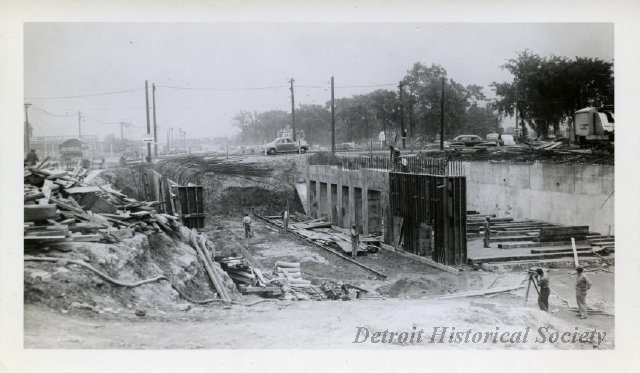The Davison Freeway, which runs east-west between M-10 and Interstate 75, was arguably the first urban freeway constructed in the United States. It was named after Jared Davison, an English immigrant and early settler whose farm bordered what became Davison Avenue. In 1914 the area was incorporated into a 2.9 square mile city called Highland Park, which exists within the boundaries of the City of Detroit.
Davison Avenue was the only viable east-west street that crossed Highland Park connecting to Detroit. Because of heavy traffic, the Highland Park Council approved a proposal to replace the road with a six-lane freeway and construction began in 1941. As production progressed, defense plants during World War II needed access to the freeway, so the pace was increased.
On November 25, 1942, the freeway was opened without a dedication ceremony and thus the first urban, below grade freeway in the United States was born. Travel time to and from Detroit improved from approximately 15 minutes to around three to four minutes. In 1968, the freeway was extended eastward almost to Conant Street in order to connect to the new I-75 or Chrysler Freeway, making it approximately five and a half miles long. In 1993 the road was transferred from Wayne County’s jurisdiction to the Michigan Department of Transportation and designated as M-8.
Over the years, the freeway, designed to carry 40,000-60,000 cars daily, was not maintained and began to deteriorate. At that time, it still had its original concrete surface with three lanes in each direction, narrow spacing for passing, no shoulders, and a small grassy median. In 1996 it was closed for a $45 million reconstruction project. The construction lasted over a year, and the freeway reopened in April 1997 with much fanfare. Today, it is an eight-lane freeway, with a new exit to Woodward Ave, shoulders, and new bridges which improve safety for motorists and access to the City of Highland Park.
